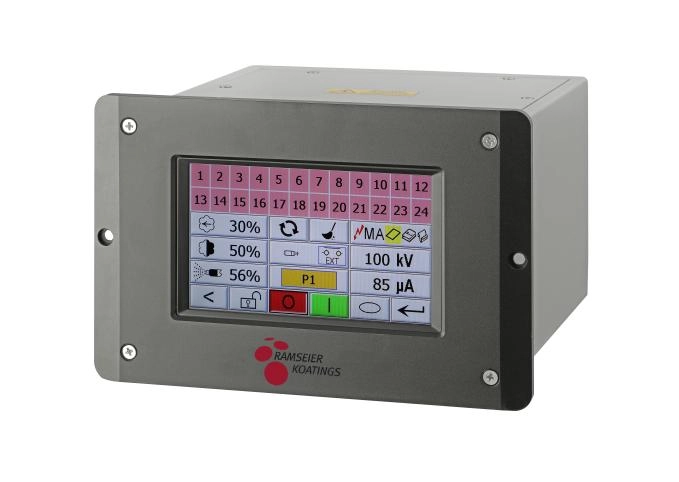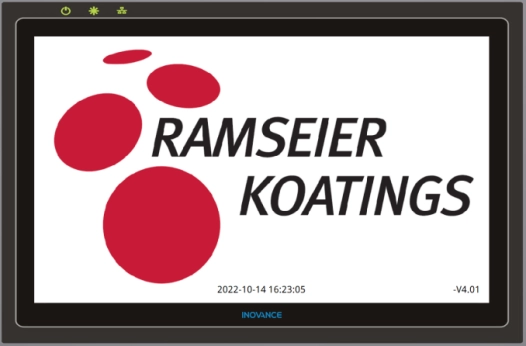Content Menu
● Understanding Integrated Control Systems in Powder Coating
● Key Features of an Integrated Control System for Powder Coating
>> 1. Centralized Touchscreen Interface (H2)
>>> Benefits of a Touchscreen Interface (H3)
>> 2. Closed-Loop Digital Flow Control (H2)
>>> How Closed-Loop Flow Enhances Performance (H3)
>> 3. Comprehensive Gun Parameter Control (H2)
>>> Advanced Gun Control Features (H3)
>> 4. Expandability and Compatibility (H2)
>>> System Flexibility (H3)
>> 5. Advanced Coating Modes and Customization (H2)
>>> Coating Modes Explained (H3)
>> 6. Real-Time Data and Diagnostics (H2)
>>> Benefits of Real-Time Monitoring (H3)
>> 7. Environmental and Safety Enhancements (H2)
>>> Safety and Sustainability Features (H3)
● How Integrated Control Systems Improve Powder Coating Operations
● Frequently Asked Questions (FAQs)
Powder coating is a widely used finishing process that applies a durable, high-quality protective and decorative layer to metal and other substrates. To achieve consistent, efficient, and high-performance powder coating, modern manufacturing facilities rely heavily on integrated control systems. These systems unify the control of various powder coating parameters and equipment into a centralized platform, enhancing productivity, quality, and operational ease. This article explores the top features of an integrated control system for powder coating, highlighting how these features contribute to optimal coating performance and line efficiency.

Understanding Integrated Control Systems in Powder Coating
An integrated control system for powder coating is a centralized digital platform that manages and monitors all critical parameters involved in the powder coating process. It typically controls electrostatic spray guns, powder flow, conveyor speeds, curing ovens, and other system components, ensuring that the entire process is synchronized and optimized.
Such systems are designed to replace fragmented controls, offering a unified interface that improves operator experience and process consistency. They are essential in automated powder coating lines where precision and repeatability are paramount.
Key Features of an Integrated Control System for Powder Coating
1. Centralized Touchscreen Interface (H2)
A hallmark of advanced integrated control systems is a single, large LCD color touchscreen interface. This interface provides operators with a comprehensive view of all system parameters and controls in one place.
Benefits of a Touchscreen Interface (H3)
- Ease of Use: Icon-based graphics and intuitive menus make setup and operation straightforward, reducing training time and operator errors.
- Multi-language Support: Graphic icons transcend language barriers, enabling global usability without complex translations.
- Real-time Monitoring: Operators can instantly view and adjust parameters such as powder flow, gun position, voltage, and conveyor speed.
- Preset Management: The interface allows storage and recall of multiple presets for different part styles or coating recipes, facilitating quick changeovers.
2. Closed-Loop Digital Flow Control (H2)
One of the most critical features is the closed-loop digital flow technology, which maintains consistent powder flow regardless of variations in air supply or environmental conditions.
How Closed-Loop Flow Enhances Performance (H3)
- Stable Airflow: The system continuously monitors and adjusts the air pressure feeding the powder pump, ensuring stable powder delivery.
- Consistent Coating Quality: By maintaining uniform powder flow, the system prevents defects like uneven coverage or excessive overspray.
- Material Efficiency: Stable flow reduces powder waste, lowering operational costs and environmental impact.
3. Comprehensive Gun Parameter Control (H2)
Integrated control systems provide detailed control over spray gun parameters, including voltage, current, powder flow rate, atomizing air, and gun positioning.
Advanced Gun Control Features (H3)
- Select Charge® Technology: This patented technology optimizes the electrostatic charge on powder particles for better adhesion and finish quality.
- Automatic Feedback Current (AFC): The system automatically adjusts the current to maintain optimal charging conditions.
- In/Out Gun Positioning: Programmable gun movements, including reciprocators and positioners, ensure precise application on complex parts.
- Individual and Global Settings: Operators can adjust parameters for individual guns or apply global changes across all guns simultaneously.
4. Expandability and Compatibility (H2)
Modern integrated control systems are designed with future-proofing in mind, offering expandability and compatibility with existing plant infrastructure.
System Flexibility (H3)
- Program Storage and Backup: Dual compact flash memory cards allow for operating system storage, program backups, and virtually unlimited presets.
- PLC Integration: Compatibility with customer-supplied programmable logic controllers (PLCs) enables seamless integration into broader factory automation systems.
- Modular Design: Systems can be upgraded or expanded to accommodate additional guns, sensors, or new coating technologies without replacing the entire control system.
5. Advanced Coating Modes and Customization (H2)
Integrated control systems often include multiple preset coating modes and user-programmable options to handle diverse coating requirements.
Coating Modes Explained (H3)
- Standard Mode: For typical powder coating applications with balanced parameters.
- Recoat Mode: Optimized for applying additional layers without defects.
- Deep Recess Mode: Designed for parts with intricate geometries requiring precise powder penetration.
- Special Modes: For handling powders with unique characteristics, such as metallic or mica-based blends.
- User-Programmable Mode: Allows customization of parameters for specific parts or processes, enhancing flexibility.
6. Real-Time Data and Diagnostics (H2)
Integrated control systems provide continuous monitoring and diagnostic capabilities to maintain process control and minimize downtime.
Benefits of Real-Time Monitoring (H3)
- Process Feedback: Operators receive immediate alerts on deviations from set parameters, enabling quick corrective actions.
- Maintenance Alerts: The system can predict maintenance needs based on operational data, reducing unexpected failures.
- Quality Assurance: Continuous data logging supports traceability and quality control documentation.
7. Environmental and Safety Enhancements (H2)
Integrated control systems contribute to safer and more environmentally friendly powder coating operations.
Safety and Sustainability Features (H3)
- Powder Recovery Integration: Controls coordinate with powder recovery systems to minimize overspray and waste.
- Operator Safety: Automated controls reduce manual intervention, limiting operator exposure to powder and fumes.
- Energy Efficiency: Optimized curing oven and conveyor control reduce energy consumption without compromising quality.
How Integrated Control Systems Improve Powder Coating Operations
Integrated control systems transform powder coating lines by delivering:
- Increased Productivity: Automation and centralized control reduce cycle times and improve throughput.
- Consistent Quality: Precise control over all parameters ensures uniform finishes and reduces rework.
- Reduced Waste: Stable powder flow and recovery systems lower material consumption.
- Simplified Operation: User-friendly interfaces and presets make changeovers faster and training easier.
- Data-Driven Optimization: Access to operational data enables continuous process improvements.
Frequently Asked Questions (FAQs)
Q1: What is the advantage of closed-loop digital flow control in powder coating?
A1: It ensures stable and consistent powder delivery by automatically adjusting airflow to compensate for pressure changes, resulting in uniform coating quality and reduced material waste.
Q2: Can integrated control systems handle multiple powder coating guns simultaneously?
A2: Yes, these systems allow individual and global control of multiple guns, enabling precise parameter adjustments for each gun or coordinated settings across all guns.
Q3: How do integrated control systems improve operator usability?
A3: With a single touchscreen interface featuring icon-based graphics, operators can easily monitor and adjust system parameters without complex programming or language barriers.
Q4: Are integrated control systems compatible with existing factory automation?
A4: Most modern systems support integration with customer-supplied PLCs and can be expanded or upgraded to fit into existing automation frameworks.
Q5: What types of coating modes are available in advanced integrated control systems?
A5: Common modes include Standard, Recoat, Deep Recess, Special for unique powders, and User-Programmable modes for customized applications.

[1] https://coastisi.com/nordson-system-controls/
[2] https://www.scribd.com/document/10317685/%E5%A4%A7%E5%AD%A6%E7%A7%91%E6%8A%80%E8%8B%B1%E8%AF%AD
[3] https://www.nordson.com/en/products/industrial-coating-systems-products/icontrol-2---integrated-control-system
[4] https://huggingface.co/openbmb/VisCPM-Paint/resolve/main/vocab.txt?download=true
[5] https://ems-powdercoating.com/automated-powder-coating-system/
[6] https://www.advancedfinishing.com/product/icontrol-2-integrated-control-system/
[7] https://www.wagner-group.com/us/industry/products/ips-coating-center/
[8] https://www.wagner-group.com/us/industry/products/powder-coating/complete-systems/
Hot Tags: China, Global, OEM, private label, manufacturers, factory, suppliers, manufacturing company










































 .
. 